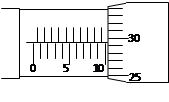问题
单项选择题
( )直接决定了价格总水平变动的方向和幅度。
A.社会总需求变化
B.社会总供给变化
C.社会总需求和社会总供给平衡关系的变化
D.货币供应总量与社会可供商品和服务总量的比例关系的变化
答案
参考答案:D
解析:[解题要点] P 114~P 115价格总水平的变化。价格总水平变动的直接原因是社会总需求与社会总供给的平衡关系发生变化,总需求大于总供给,价格总水平上涨;反之,价格总水平下降。社会总需求是全社会商品和服务购买力总额,由有支付能力的需求构成,具体的表现是货币供应总量。货币供应总量与社会可供商品和服务总量的比例关系的变化,直接决定了价格总水平的变动的方向和幅度。

